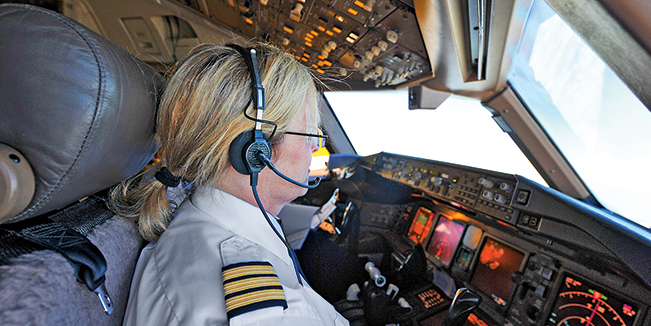
The radio is an important part of safety in any airspace, and if things suddenly go quiet, do you know what to do?
It may seem suspicious to you if all you hear is quiet, but perhaps your transmissions are being heard, and you just can’t receive the transmissions of others? Well, the first thing you need to do, if you are in doubt that your radio is working, is establish if you can be heard. If you are trying to establish contact with a station or other aircraft on a particular frequency and it fails, keep listening out on this frequency, but try and establish contact on another frequency that is appropriate to the route or the location you find yourself in. For example, if you are broadcasting on Johannesburg Special Rules East frequency (125.4) and you are getting no joy, then you could consider trying Johannesburg Info on 119.5 – this is where those Avimap folding frequency charts are most useful!
If all your attempts at communication fail, the most correct thing you can do is continue transmitting your position and intentions on the appropriate frequencies, addressed to the right ‘person’. That way, if someone can hear you, then at least they know where you are, and what you are doing. Just remember, before starting your message, to clearly state twice “Transmitting Blind” so that no one will get angry like your mother does, when you do not respond!
If it becomes obvious that even one-way communications are not possible, then, and only then, set your transponder to code 7600 and proceed with the lost communications procedures, which of course you all remember…
LOST COMMUNICATIONS IN VMC
If your radio stops working, and you doing a VFR flight, and conditions are obviously VMC, then you need to land at the nearest suitable aerodrome using the standard radio communications failure procedure (RCF), but also be aware that there may be specific RCF procedures at a specific aerodrome, so this should be something to check out when you do your pre-flight planning. As soon as you land, be sure to contact Air Traffic Services as soon as possible.
STANDARD RADIO COMMUNICATIONS PROCEDURE
1. Maintain squawk of 7600.
2. Make a relevant blind broadcast to traffic in the area advising of the probability of a radio communication failure, position and intentions.
3. Select landing lights on.
4. Approaching the aerodrome, make a relevant blind broadcast to traffic on the controlled airfields frequency to indicate the probability of a radio communication failure, position and intentions.
5. Join overhead the aerodrome at a height of 1 000 feet above circuit altitude to ascertain which is the active runway in use.
6. Conform to the circuit pattern while joining, preferably on the downwind leg.
7. Continue to make blind broadcasts on the controlled airfields frequency to indicate the position in the circuit pattern.
8. Land and vacate the runway expeditiously and safely.
9. Taxi to the nearest parking area and shutdown.
10. Inform the owner or operator and ATC.
11. Make the relevant entry in the aircraft’s flight folio.
Note – This procedure is to be used in the event the aerodrome at which the landing is to take place does not have specific procedures to be followed as published in the AIP.
So there you have it! Why not print this out and keep it in your flight bag – you never know when you may need it.
In part 2 we will tell you how to deal with an IFR radio communications failure, which is somewhat different, so watch this space!




Trackbacks/Pingbacks